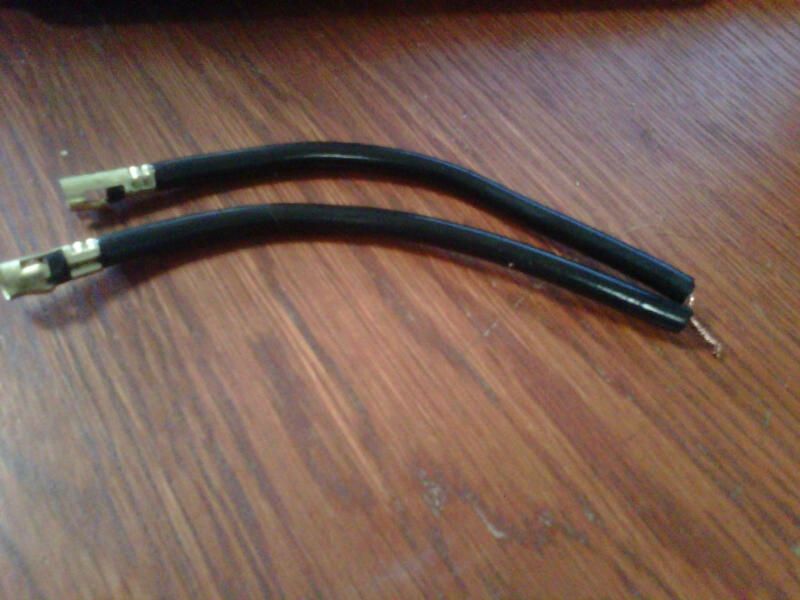This all just makes me think capacitor , they work in either direction too? Can they be wired in series and help or hurt?
Announcement
Collapse
No announcement yet.
V-Twin Coil
Collapse
X
-
The fire truck link deals specifically with a single output coil and correctly states that it take more voltage to fire a plug in reverse polarity. We're dealing with a system where one plug ALWAYS fires reverse polarity. The current (conventional) actually travels down one plug to ground and back up though the other plug to the coil completing the loop. Reversing polarity only changes which plug is fired forward and which is reverse. One of them HAS to fire reverse with this system. The primary coil circuit still builds up a magnetic flux around the coil and it still collapses, albeit the N-S is reversed. It doesnt matter to the condenser, because the voltage spike on the primary side of the coil will still be positive.
Unless the aftermarket coils are somehow wound with one primary winding and two independant secondary coils (I don't know if that's possible), polarity shouldn't matter. The two secondary coils in a Harly coil are connected in the center and isolated completely from ground. A car coil secondary winding is connected to the + terminal on one end.
If you use a volt meter to check polarity, test both plugs and you'll find one fires reverse and one forward, at least with a Harley coil. I'm going to test an aftermarket one to see if the same is true.
I taught engine diagnostics on Sun equipment for 10 years back in the 80s, and although we didn't deal with waste sparks on cars back then, I learned ignition systems forwards and backwards.
Comment
-
I ohmed out the VT coil, and it's about 16k between plug leads and infinite to the primary connections meaning the secondary windings are one large coil or two small coils in series. Harley used two small coils because they were probably readily available, but they needed to double the voltage to fire both plugs in series.
I set up the coil both forward and reverse polarity, and the only thing that changed was which plug fired forward and which fired reverse. I verified it with both a voltmeter and visually (It's an old trick to put a pencil tip in the line of fire and make the direction of fire visible. I opened the plug gaps way up to do this).
I think the majority of ignition problems causing hard starting can be traced back to low voltage TO the coil. With the ignition on and the points closed, the voltage between the negative side of the coil and the engine should be within 1/2 a volt of the the voltage across the battery. Remember, you can have a voltage drop on the positive or negative side of the circuit. Either one will cause poor current flow across the primary windings of the coil so the magnetic flux buildup will be weak resulting in a poor spark. It can be a simple bad connection such as an ignition switch termianal, or a series of resistances including too low a guage wire. The connection at the point is very critical, as well as the timer ground. In a 6 volt circuit, twice as much current has to flow through the primary circuit as 12 volt, so any resistance will drastically affect coil output.
I have three almost new VT coils, and sure enough, one of them is infinite across the secondary windings. I'll dissect it to see if the epoxy cracked.
Comment
-
Because this problem happened after he washed his machine I tend to look toward water intrustion. I have heard that Teddy's aren't sealed well and that if you mask off the joints (like the bathtub tile trick) and use black silicon for a seal they work far better. Just sayin.DrSprocket
Comment
-
DrSprocket!!!
I've got a brand spanky new coil sitting here waiting to be put into service. I may just attempt a cautionary seal. Thanks for mentioning it!
Tim,
I would be interested to know what you find inside that coil.Cory Othen
Membership#10953
Comment
-
Cory,
I can't tell much about the inside of the coil because of the epoxy. I pried off the shell and the epoxy has cracks in it, but I might have done it while prying.
About 15 years ago, I trailered a bike to Daytona, and the repop coil got sprayed with road salt. It lasted about 5 miles after that. They definitely aren't very moisture resistant.
Tim
Comment
-
If we are talking magneto double coils here, the plugs both fire together, one being compression, one is at exhaust, both same direction. Here a easy way to check intensity without tools. Make a jig/rig like this and fix it 1/4" from mag body and kick. Should see a blue spark jump, if not, setup has a problem.
If ignition coils, whole different story, as I learned very recently. I think the two are getting crossed up here! Just my 2 cents.
Comment

Comment